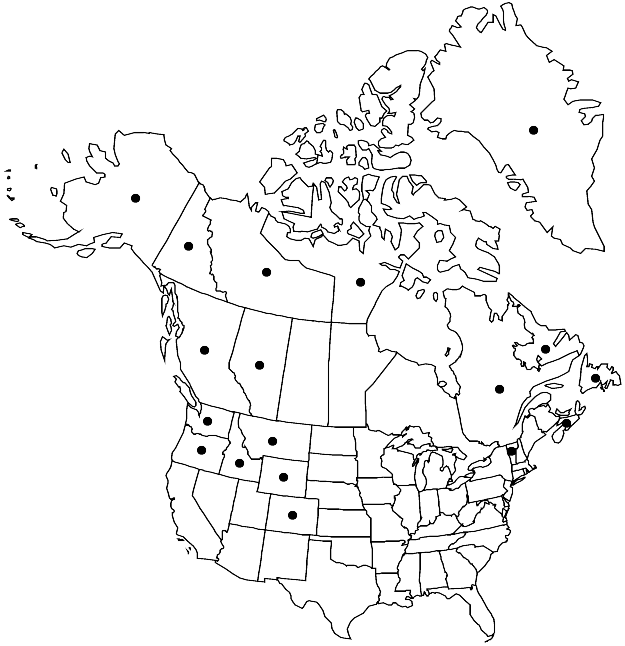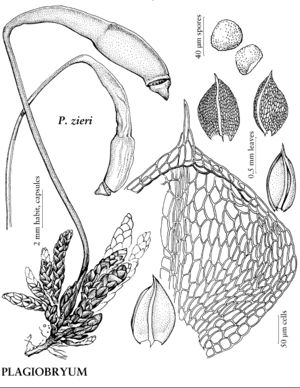Difference between revisions of "Plagiobryum zieri"
Öfvers. Kongl. Vetensk.-Akad. Förh. 19: 606. 1863.
FNA>Volume Importer |
imported>Volume Importer |
||
| (4 intermediate revisions by 2 users not shown) | |||
| Line 9: | Line 9: | ||
|special_status={{Treatment/ID/Special_status | |special_status={{Treatment/ID/Special_status | ||
|code=F | |code=F | ||
| − | |label= | + | |label=Illustrated |
}} | }} | ||
|basionyms={{Treatment/ID/Basionym | |basionyms={{Treatment/ID/Basionym | ||
|name=Bryum zieri | |name=Bryum zieri | ||
|authority=Hedwig | |authority=Hedwig | ||
| + | |rank=species | ||
|publication_title=Sp. Musc. Frond., | |publication_title=Sp. Musc. Frond., | ||
|publication_place=182, plate 44, figs. 1–5. 1801 (as zierii) | |publication_place=182, plate 44, figs. 1–5. 1801 (as zierii) | ||
| Line 20: | Line 21: | ||
|name=Pohlia zieri | |name=Pohlia zieri | ||
|authority=(Hedwig) Schwägrichen | |authority=(Hedwig) Schwägrichen | ||
| + | |rank=species | ||
}} | }} | ||
|hierarchy=Bryaceae;Plagiobryum;Plagiobryum zieri | |hierarchy=Bryaceae;Plagiobryum;Plagiobryum zieri | ||
| Line 44: | Line 46: | ||
-->{{#Taxon: | -->{{#Taxon: | ||
name=Plagiobryum zieri | name=Plagiobryum zieri | ||
| − | |||
|authority=(Dickson ex Hedwig) Lindberg | |authority=(Dickson ex Hedwig) Lindberg | ||
|rank=species | |rank=species | ||
| Line 58: | Line 59: | ||
|publication title=Öfvers. Kongl. Vetensk.-Akad. Förh. | |publication title=Öfvers. Kongl. Vetensk.-Akad. Förh. | ||
|publication year=1863 | |publication year=1863 | ||
| − | |special status= | + | |special status=Illustrated |
| − | |source xml=https:// | + | |source xml=https://bitbucket.org/aafc-mbb/fna-data-curation/src/2e0870ddd59836b60bcf96646a41e87ea5a5943a/coarse_grained_fna_xml/V28/V28_245.xml |
|genus=Plagiobryum | |genus=Plagiobryum | ||
|species=Plagiobryum zieri | |species=Plagiobryum zieri | ||
Latest revision as of 21:34, 5 November 2020
Plants 0.8–2.5 cm, whitish or silvery green, usually with pink tinge. Stems 0.3–2 cm, innovations elongate, julaceous. Leaves of innovations appressed or imbricate, broadly ovate to nearly circular, concave, 0.7–1.3 × 0.4–0.8 mm; margins plane; apex acute, ending in small reflexed point; costa ending in or shortly before apex, in transverse section abaxial stereid band usually 2 or 3 cells thick, occasionally absent, 2 or 3 adaxial cells in 1 layer; leaves on fertile shoots more narrowly ovate; proximal laminal cells 2–4:1, walls firm; medial cells in older leaves rhomboidal or elongate-rhomboidal, 13–24 µm wide mid leaf, 2.5–5:1, walls ± firm, cells lax and thin-walled distally. Capsule horizontal to pendulous, 4–14 mm, neck 0.9–2.5 times urn length; exostome yellow to yellow-brown, 0.8–0.9 times endostome length, distinctly papillose proximally. Spores separate at maturity, 28–40 µm, papillose, brown, yellowish brown, or greenish brown.
Phenology: Capsules mature mid summer–early fall.
Habitat: Ledges, crevices of moist or wet cliff faces, near waterfalls, substrates including basalt, shale, limestone
Elevation: low to high elevations (0-3000 m)
Distribution

Greenland, Alta., B.C., Nfld. and Labr., N.W.T., N.S., Nunavut, Que., Yukon, Alaska, Colo., Idaho, Mont., Oreg., Vt., Wash., Wyo., Central America (Guatemala), Europe, Asia, Africa (South Africa).
Discussion
Plagiobryum zieri is a predominantly montane-alpine species that is disjunctively distributed between eastern and western North America. The species differs from P. demissum in the julaceous, whitish or silvery green plants that are usually suffused with tinges of pink. Plagiobryum demissum is invariably red or reddish brown, and the shoots are non-terete. The broadly ovate, flat-margined leaves of P. zieri also serve to identify the species. Sterile collections are more likely to be confused with Bryum argenteum, which is also silvery-green and has a similar leaf shape. However, plants of B. argenteum are smaller, have laminal cells firm to ± incrassate distally and quadrate proximally, lack pinkish coloration and occur in drier, often disturbed or nitrogen enriched habitats.
Selected References
None.
